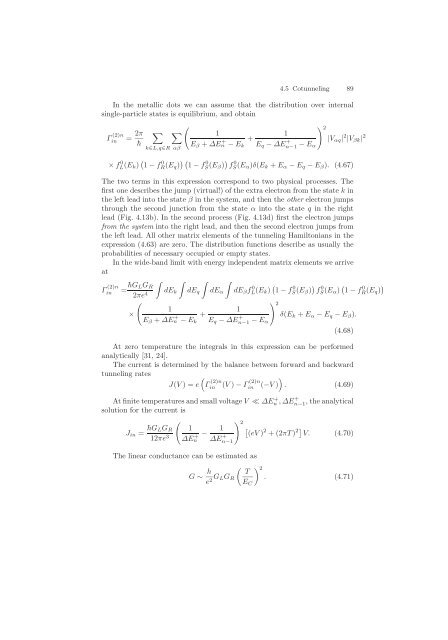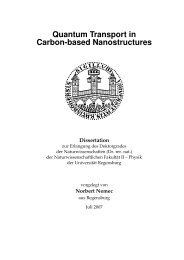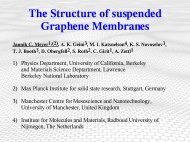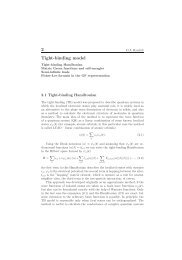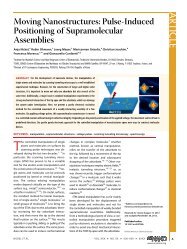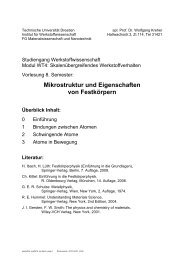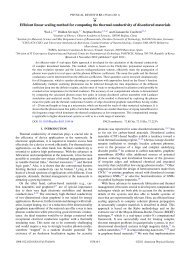4 Coulomb blockade
4 Coulomb blockade
4 Coulomb blockade
You also want an ePaper? Increase the reach of your titles
YUMPU automatically turns print PDFs into web optimized ePapers that Google loves.
4.5 Cotunneling 89<br />
In the metallic dots we can assume that the distribution over internal<br />
single-particle states is equilibrium, and obtain<br />
Γ (2)n<br />
in<br />
2π<br />
=<br />
¯h<br />
<br />
k∈L,q∈R αβ<br />
<br />
1<br />
Eβ + ∆E + +<br />
n − Ek<br />
1<br />
Eq − ∆E + n−1 − Eα<br />
2<br />
|Vαq| 2 |Vβk| 2<br />
× f 0 L(Ek) 1 − f 0 R(Eq) 1 − f 0 S(Eβ) f 0 S(Eα)δ(Ek + Eα − Eq − Eβ). (4.67)<br />
The two terms in this expression correspond to two physical processes. The<br />
first one describes the jump (virtual!) of the extra electron from the state k in<br />
the left lead into the state β in the system, and then the other electron jumps<br />
through the second junction from the state α into the state q in the right<br />
lead (Fig. 4.13b). In the second process (Fig. 4.13d) first the electron jumps<br />
from the system into the right lead, and then the second electron jumps from<br />
the left lead. All other matrix elements of the tunneling Hamiltonians in the<br />
expression (4.63) are zero. The distribution functions describe as usually the<br />
probabilities of necessary occupied or empty states.<br />
In the wide-band limit with energy independent matrix elements we arrive<br />
at<br />
Γ (2)n<br />
in<br />
=¯hGLGR<br />
2πe4 <br />
dEk dEq dEα dEβf 0 L(Ek) 1 − f 0 S(Eβ) f 0 S(Eα) 1 − f 0 R(Eq) <br />
<br />
1<br />
×<br />
Eβ + ∆E + 1<br />
+<br />
n − Ek Eq − ∆E + 2 δ(Ek + Eα − Eq − Eβ).<br />
n−1 − Eα<br />
(4.68)<br />
At zero temperature the integrals in this expression can be performed<br />
analytically [31, 24].<br />
The current is determined by the balance between forward and backward<br />
tunneling rates<br />
Jin = ¯hGLGR<br />
12πe 3<br />
<br />
J(V )=e<br />
∆E + n<br />
Γ (2)n<br />
in<br />
∆E + n−1<br />
(V ) − Γ (2)n<br />
in<br />
<br />
(−V ) . (4.69)<br />
At finite temperatures and small voltage V ≪ ∆E + n ,∆E + n−1 , the analytical<br />
solution for the current is<br />
<br />
1<br />
−<br />
1<br />
2 (eV 2 2<br />
) +(2πT) V. (4.70)<br />
The linear conductance can be estimated as<br />
<br />
T<br />
2 . (4.71)<br />
G ∼ h<br />
GLGR<br />
e2 EC


